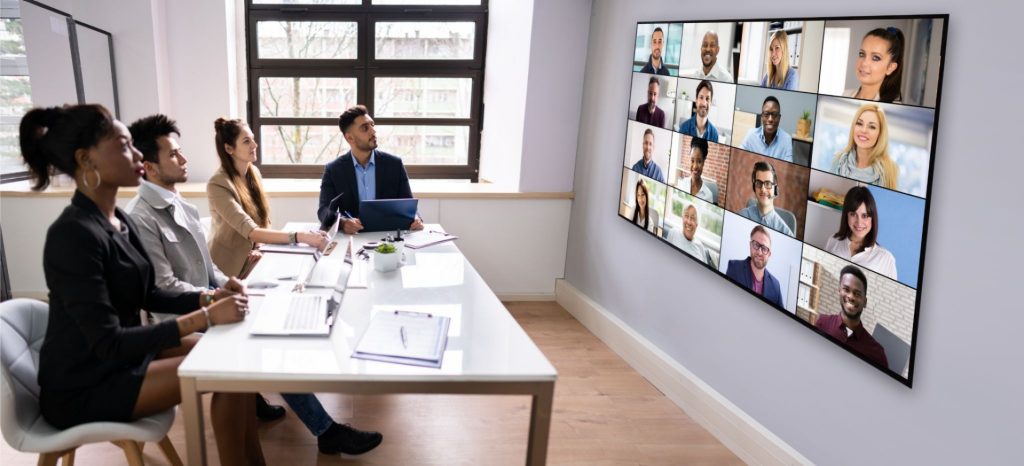The infusion of sophisticated audiovisual (AV) systems into modern courtrooms has revolutionized judicial proceedings, streamlining processes and augmenting accessibility to justice. However, this technological evolution introduces a labyrinth of challenges for court operations managers, supervisors, and administrative personnel. This article delves into the pivotal obstacles encountered in the deployment and governance of AV solutions within legal environments and offers pragmatic methodologies to surmount them.

The Unceasing Evolution of AV Technology
Challenge: AV technology is in a perpetual state of advancement, necessitating continual updates to uphold operational efficacy. Existing systems may falter under the weight of emerging demands, rendering them inadequate for evolving judicial requirements. Additionally, financial constraints and interoperability concerns with pre-existing infrastructure exacerbate the complexity of upgrades.
Solution: A proactive approach to technological augmentation is imperative. Establishing a structured technology roadmap—comprising periodic system evaluations—ensures sustained relevancy. Drafting a formalized upgrade framework for financial planning and procurement negotiations fosters strategic decision-making. Engaging with industry specialists and benchmarking against technological frameworks adopted by other court districts can provide invaluable insights. A meticulous checklist and comprehensive documentation should underpin this evaluation process, ensuring informed and future-proof investments.
Managing the Intricacy of Advanced AV Systems
Challenge: The contemporary courtroom ecosystem integrates multifaceted AV components such as video conferencing, digital evidence display, and centralized AV control mechanisms. These sophisticated systems, when implemented without an overarching technology blueprint, often present usability hurdles. Furthermore, the inclusion of extraneous features can amplify operational complexity beyond necessity.
Solution: To mitigate technological convolution, judicial institutions must delineate and prioritize core functionalities pivotal to daily proceedings. Curating a compendium of primary use cases provides a blueprint for refining AV configurations. Once essential workflows are mapped, targeted AV programming and bespoke technical training can simplify interactions. The implementation of an intuitive, consolidated AV control interface significantly enhances user engagement, streamlining courtroom operations with precision.
Harmonizing Modern AV Systems with Legacy Infrastructure
Challenge: Many judicial venues still operate on antiquated systems, rendering seamless integration with contemporary AV solutions a formidable task. Budgetary allocations often permit only incremental technological enhancements, necessitating coexistence between modern and legacy hardware. This dichotomy frequently engenders compatibility dilemmas, especially when integrating disparate manufacturer technologies.
Solution: The judicious application of AV programming can facilitate a cohesive interface between heterogeneous systems. By architecting a unified control interface, courts can maintain user familiarity, minimizing the need for extensive retraining. Strategic programming can bridge the functional disparities between legacy and state-of-the-art systems, enabling seamless interoperability while preserving operational continuity.
Overcoming Resistance in User Training and Adoption
Challenge: Judicial officers, legal practitioners, and courtroom personnel often exhibit reluctance toward technological adoption due to the perceived complexity of AV systems. Training initiatives can be time-intensive, further compounding the challenge of widespread assimilation.
Solution: Encouraging engagement necessitates persistent advocacy of the benefits associated with AV enhancements. Collaborating with system manufacturers or technology consultants to devise comprehensive training modules can expedite the learning curve. Establishing enduring partnerships with industry experts ensures ongoing user support, allowing in-house IT teams to allocate resources efficiently. Simplified, user-centric control interfaces and accessible troubleshooting guides bolster adoption, fostering confidence in technology utilization.
Facilitating Hybrid Courtroom Proceedings
Challenge: The growing necessity for remote judicial hearings necessitates the seamless integration of hybrid courtroom models that amalgamate physical and virtual participation.
Solution: Investing in AV solutions that are tailored for hybrid proceedings ensures equitable access to judicial processes, irrespective of geographic constraints. Establishing standardized protocols for remote hearings upholds procedural fairness and operational efficiency, reinforcing the judiciary’s commitment to accessible justice.
Conclusion
While AV technology introduces substantial efficiencies to courtroom operations, its successful implementation necessitates strategic navigation of technical intricacies, legacy infrastructure constraints, fiscal limitations, and user adaptability. By proactively addressing these challenges, courtrooms can harness the full potential of AV advancements, ensuring they serve as catalysts for justice rather than impediments to it.